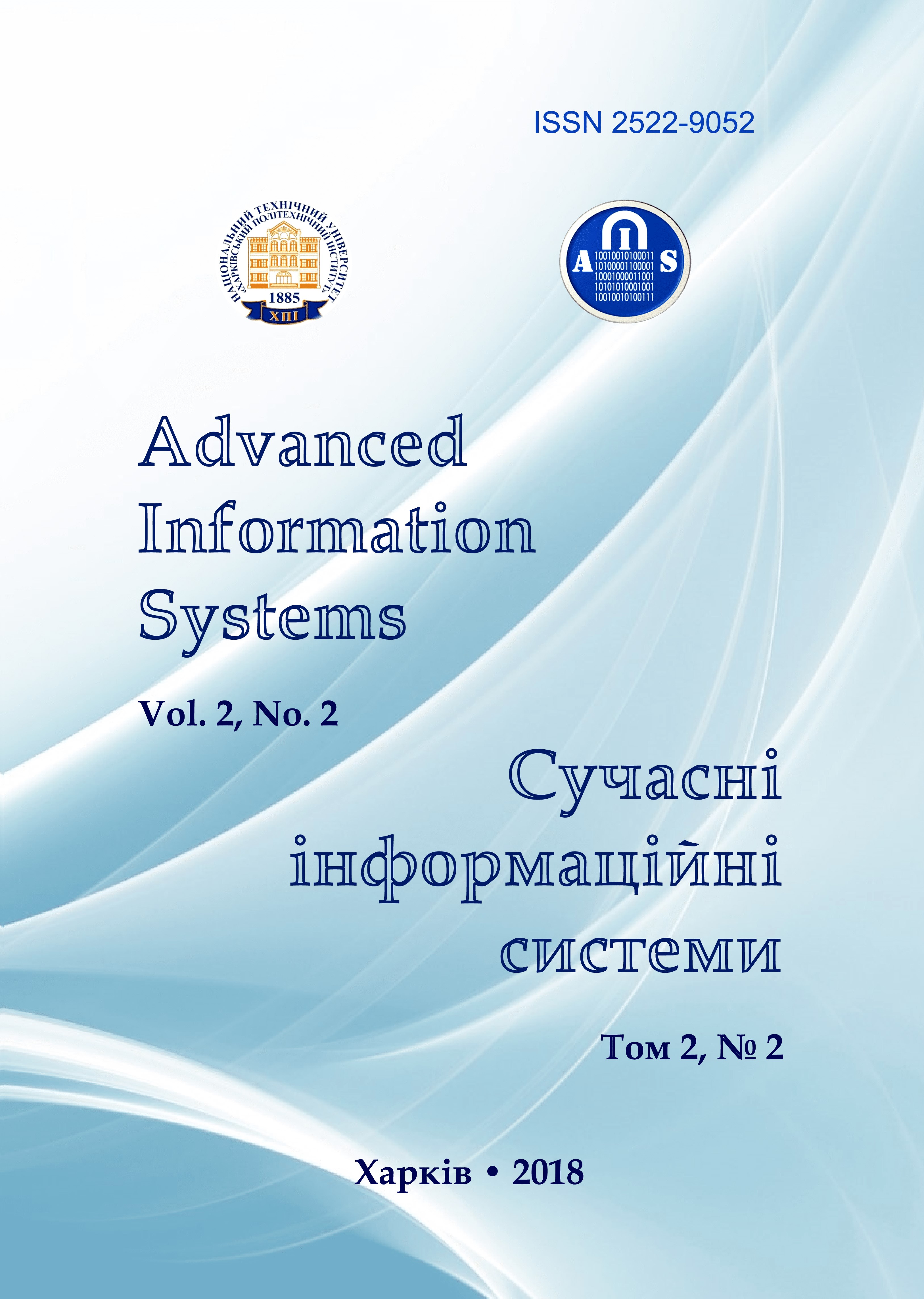The pass-through capacity redevelopment method of net critical section based on improvement ON/OFF models of traffic
Main Article Content
Abstract
Relevance. The main disadvantage of the existing traffic models of the critical network section is that it does not take into account the fact that during the periods of activity of each separate traffic source, packets are transmitted by groups. Also, the characteristics of wireless networks are not usually taken into account. The purpose of the article is to develop the method for re-distributing the bandwidth of the critical network segment based on the improvement of the ON/OFF model of the traffic for use in wireless networks. The methods used in the studies: queuing analysis methods, fractal analysis, statistical data processing. Results. The classic ON/OFF model of traffic is considered in the article, the disadvantages of this model were discovered when applying it for a wireless data transmission network. An extended ON/OFF traffic model was proposed, which corrects the shortcomings of the existing one, conditions were found in which the improved model would work most rationally. A method was proposed for redistributing the bandwidth of the critical section of the wireless data network based on the improved extended ON / OFF model of traffic at the entrance of this section, in which, unlike analogues, the distribution point between the service and information traffic ensures a proportional distribution of the bandwidth. This makes it possible to reduce the number of iterations of the point of division search based on the loss of packets and to provide an increase in the proportion of bandwidth provided for the transmission of user traffic information. Conclusions. To reduce the time of data transfer in conditions of limited bandwidth of critical sections of the wireless data network, it is most rational to use methods based on the use of fractal traffic properties, allowing short-term forecasting of its intensity. The proposed version of the extended ON / OFF model of traffic will allow performing a short-term forecast of its intensity. The proposed method of bandwidth redistribution allows to increase the share of bandwidth provided for the transmission of information traffic to the user.
Article Details
References
Willinger, W.A., Taqqu, M. and Erramilli A. (1996), “Bibliographical Guide to Self-Similar Traffic and Performance for Modern High-Speed Networks”, Stochastic Networks: Theory and Applications, Oxford University Press, Oxford, pp. 282–296.
Kuchuk, G.A. (2013), “Method of synthesis of the information structure of the coherent fragment of the corporate multiservice network”, Collection of scientific works of the Kharkiv University of Air Forces, No. 2 (35), pp. 97-102.
Olifer, V.G. (2000), New Technologies and Equipment for IP Networks, BHV, SPb., 512 p.
Korolyov, A.V., Kuchuk, G.A. and Pashnev A.A. (2003), Adaptive routing in corporate networks, HVU, Kharkiv,
p.
Ekwall, R., Urban, P. and Schiper, A. (2003), “Robust TCP Connections for Fault Tolerant Computing,”, Proc. Int. Conf. on Parallel and Distributed Systems, pp. 501-508.
Kuchuk, G.A., Mozhaev, O.O. and Vorobyov O.V. (2006), “Method of forecasting fractal traffic”, Radioelectronic and com-puter systems, NAU "KhAI", Kharkiv, No. 6 (18), pp. 181-188.
Kuchuk, G.A., Mohammad, A.S. and Kovalenko A.A. (2011), “The method of redistributing the bandwidth to mitigate the transmission time of data in a wireless network”, Collection of scientific works of Kharkiv University of Air Forces, KhUPS, Kharkiv, No. 3 (29), pp. 140-145.
Perkins, D.D., Hughes, H.D. and Owen C.B. (2002), “Factors Affecting the Performance of Ad Hoc Networks”, ICC, Vol. 4, pp. 2048–2052.
Kuchuk, G., Kharchenko, V., Kovalenko, A. and Ruchkov, E. (2016), “Approaches to selection of combinatorial algorithm for optimization in network traffic control of safety-critical systems”, East-West Design & Test Symposium (EWDTS), pp. 1-6, available at : https://doi.org/10.1109/EWDTS.2016.7807655.
Kuchuk, G.A., Kovalenko, A.A. and Mozhaev, A.A. (2010), “An Approach To Development Of Complex Metric For Multi-service Network Security Assessment”, Statistical Methods Of Signal and Data Processing (SMSDP – 2010): Proc. Int. Conf., October 13-14, 2010, NAU, RED, IEEE Ukraine section joint SP, Kyiv, pp. 158-160.
Xylomenos, G., Polyzos, G.C., Mahonen, P. and Saarenen, M. (2001), “TCP Performance Issue over Wireless Links”, IEEE Communications Magazine, No. 4, pp. 52–58.
Kuchuk, G.A. (1998), “Minimizing the loading of channels of the sacred network”, Information processing systems, NASU, PANM, HVU, Kharkiv, No. 1 (5), pp. 149-154.
